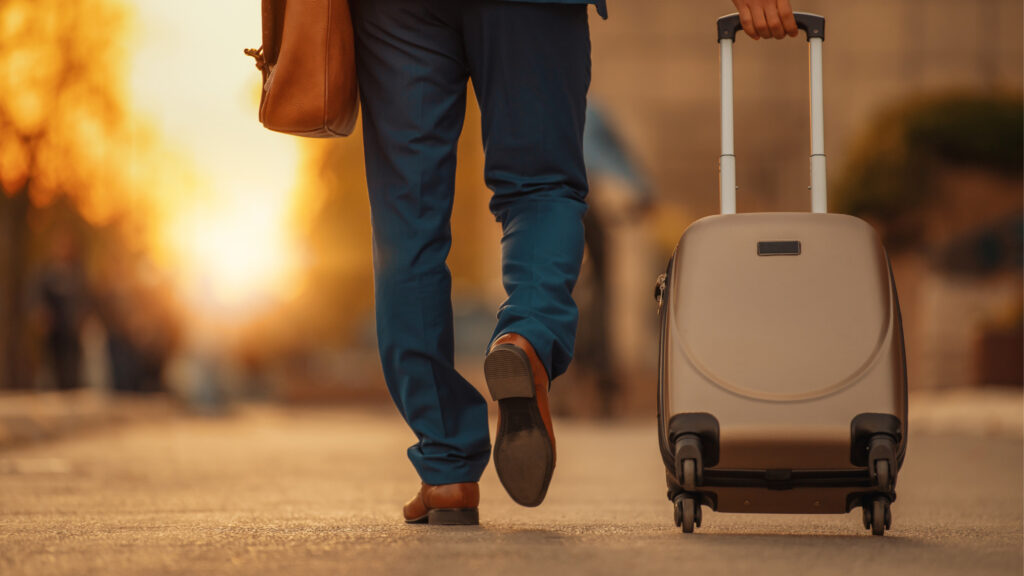
Traveling with Parkinson’s disease can feel daunting, but with the right preparations, it can still be a comfortable and enjoyable experience. Whether it’s a short road trip or a long journey by plane or train, careful planning can help you manage symptoms, avoid stress, and make the most of your time away.
This guide provides eight practical tips for Parkinson’s patients and their caregivers to ensure a smooth and stress-free travel experience.
1. Understand your Parkinson’s symptoms
The first step is to be fully aware of your Parkinson’s symptoms. Recognize the specific challenges these symptoms may bring during travel. Consider issues such as tremors, stiffness, fatigue, or mobility difficulties, and think about how these might affect your plans. For instance, mobility challenges might make it harder to navigate airports or endure long trips. By understanding your symptoms, you can plan ahead and make adjustments to ensure a comfortable and enjoyable experience.
2. Pack essential items thoughtfully
Packing carefully can make a big difference to your trip. Before you start, create a detailed checklist to ensure you have everything you need. Be sure to include:
- Medication in their original packaging, along with extra doses in case of delays.
- Your doctor’s contact information for emergencies or urgent consultations.
- Mobility aids, such as a cane or walker, and comfortable shoes for walking.
- Loose clothing that’s easy to put on and take off, such as shirts with magnetic closures.
- Water and healthy snacks to stay hydrated and maintain energy levels.
- Personal comforts, such as a travel pillow or noise-canceling headphones, to help with relaxation.
Thoughtful packing ensures you’re prepared for any situation, giving you peace of mind during your journey.
3. Plan your travel and itinerary in advance
Proper planning is crucial to making your trip smooth and stress-free. Before you travel, book accommodations and tickets suited to your condition. Choose accommodations that cater to mobility needs, such as ground-floor rooms or hotels with elevators.
Build extra time into your itinerary for rest breaks, meals, and stretching. Inform your airline, train, or bus service about your condition and request any special accommodations, such as wheelchair assistance. By preparing ahead, you can adapt to your energy levels and enjoy your trip without unnecessary pressure.
4. Manage medications and health on the go
Medications are a critical part of managing Parkinson’s symptoms, so keeping your medication schedule on track is essential. If your travel involves crossing time zones, consult your doctor beforehand to adjust your dosing schedule.
Store medications in your carry-on luggage for easy access and keep them in a temperature-controlled environment. A small pill organizer can help you stay organized. Additionally, carry a medical ID and a summary of your health conditions. This ensures you’re prepared in case of emergencies and allows you to focus on enjoying your trip.
5. Tips for airports, trains, and road travel
Navigating transportation hubs can often be overwhelming, especially for Parkinson’s patients. The stress of crowds, long queues, and navigating unfamiliar spaces can be challenging, but thorough preparation can help.
- At airports: Request wheelchair assistance or priority boarding in advance. Notify the airline of your condition when booking your ticket, and arrive early to avoid feeling rushed.
- On trains: Opt for accessible seating near restrooms or exits to minimize walking. Call ahead to confirm the availability of mobility support services.
- For road trips: Plan frequent stops to stretch, walk, and prevent stiffness. These breaks help maintain circulation and provide opportunities to rest and refresh.
Always carry a small bag with essentials such as water, snacks, and medications, regardless of your travel mode.
Related post: How to Improve Balance in Parkinson’s Disease?
6. Manage fatigue and stress while traveling
Traveling can increase fatigue, which is a common symptom for Parkinson’s patients. Managing it is possible with the right strategies.
- Pace yourself: Avoid overloading your schedule. Allow time for rest and keep your activities manageable.
- Practice relaxation: Use techniques like deep breathing or mindfulness to stay calm and centered. When stress builds up, take a moment to rest and refocus.
- Communicate openly: Share how you’re feeling with your travel companions so they can support you and adjust plans as needed.
- Prioritize sleep: Choose accommodations that are quiet and comfortable, ensuring restful sleep to recover from the day’s activities.
These strategies can help you maintain your energy and enjoy the trip more fully.
7. Engage your family and caregivers
Traveling with family or caregivers can make the journey much easier. Their company can provide emotional support and assistance with challenges you might face when traveling alone.
Share your travel plans with family members beforehand and involve them in the preparations. Make sure they are aware of your medication schedule, mobility needs, and emergency contacts. Having a trusted person by your side ensures you’re not alone and can make the trip more enjoyable for everyone involved.
8. Prepare for emergencies
Having an emergency plan can greatly reduce anxiety while traveling. Research medical facilities and pharmacies near your destination so you know where to go if needed.
Carry an updated health record, including your Parkinson’s diagnosis, medications, and your doctor’s contact information. It’s also helpful to carry a small card that explains your condition and provides instructions for emergency responders. This proactive approach saves time and ensures you’re prepared for any unexpected situations.
Conclusion
Traveling with Parkinson’s disease requires careful preparation, but it’s entirely possible to have a smooth and enjoyable journey. By understanding your symptoms, packing thoughtfully, planning ahead, and relying on your support system, you can overcome challenges and focus on making memories. With these tips in mind, you’re ready to go on your next adventure with confidence.
